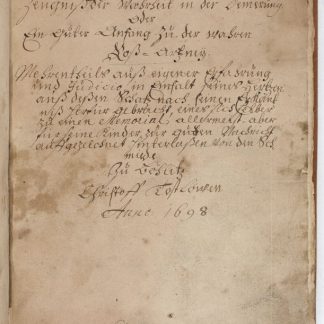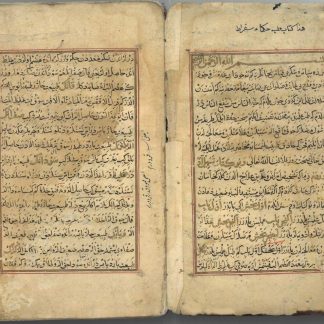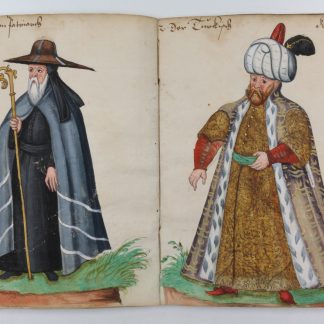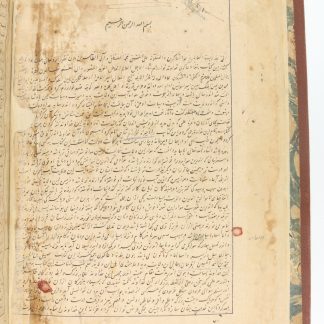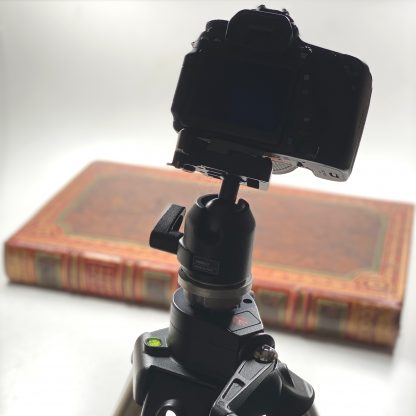
Remedies by David of Antioch, copied by a contemporary
Majma' al-manafi' al-badaniyah [Compilation of physical benefits].
8vo (122 x 188 mm). 66 ff. Arabic manuscript on watermarked paper, possibly of Ottoman origin. Black naskh script with important words and phrases picked out in red. Modern brown morocco stamped with medallion.
$31,280.00
Copied during the author's lifetime, this famous medical treatise was compiled by Dawud al-Antaki (d. 1599 CE), the famous blind doctor of Cairo known in English as David of Antioch. Despite (or perhaps due to) being such an early copy, this manuscript's Jerusalem-based scribe was a little confused about its authorship. He describes al-Antaki's work not as his own, but as a summary of "Kitab Ma la yasa'u al-t'abib jahluh" ("That which a physician cannot ignore"), which is not far off - al-Antaki borrowed liberally from that work. However, the scribe attributes "That which a physician cannot ignore", and thus his manuscript, to the authorship of Andalusian polymath Ibn al-Baytar, who in fact wrote a source text which both al-Antaki and the Persian author of "That which a physician cannot ignore" used extensively. Despite this minor gaffe, the scribe himself is not without his own medical credentials: his name is 'Abd al-Rahman ibn Muhammad, better known as Ibn al-Mu'id, a doctor at the Bimaristan al-Salahi (Salahi Hospital) in late 16th century Jerusalem.
While Ibn al-Mu'id was copying this manuscript in Jerusalem, in distant Cairo an elderly al-Antaki had already mastered Arabic and Greek, and written widely on medicine, literature, logic and other subjects, becoming one of the foremost physicians of his time. As his name indicates, his fame was made in Cairo and Damascus, but he was originally from Antioch in Syria. Today, al-Antaki is credited with introducing guidelines for the medical industry and its use of drugs: standardizing names of medications, specifying appropriate dosages based on the patient, noting interactions with other foods and drugs, explaining how to use of two or more medications at once, and even covering such apparently modern details like shelf life and substitutions. A manuscript fragment of this work is kept at Yale.
An ownership inscription on the title-page mentions it was purchased by the herbalist Badr al-Din 'Abd Allah al-Maqdisi.
Endpapers replaced, a few closed tears and marginal paper repairs, light soiling; in good condition.
GAL II, 364.

